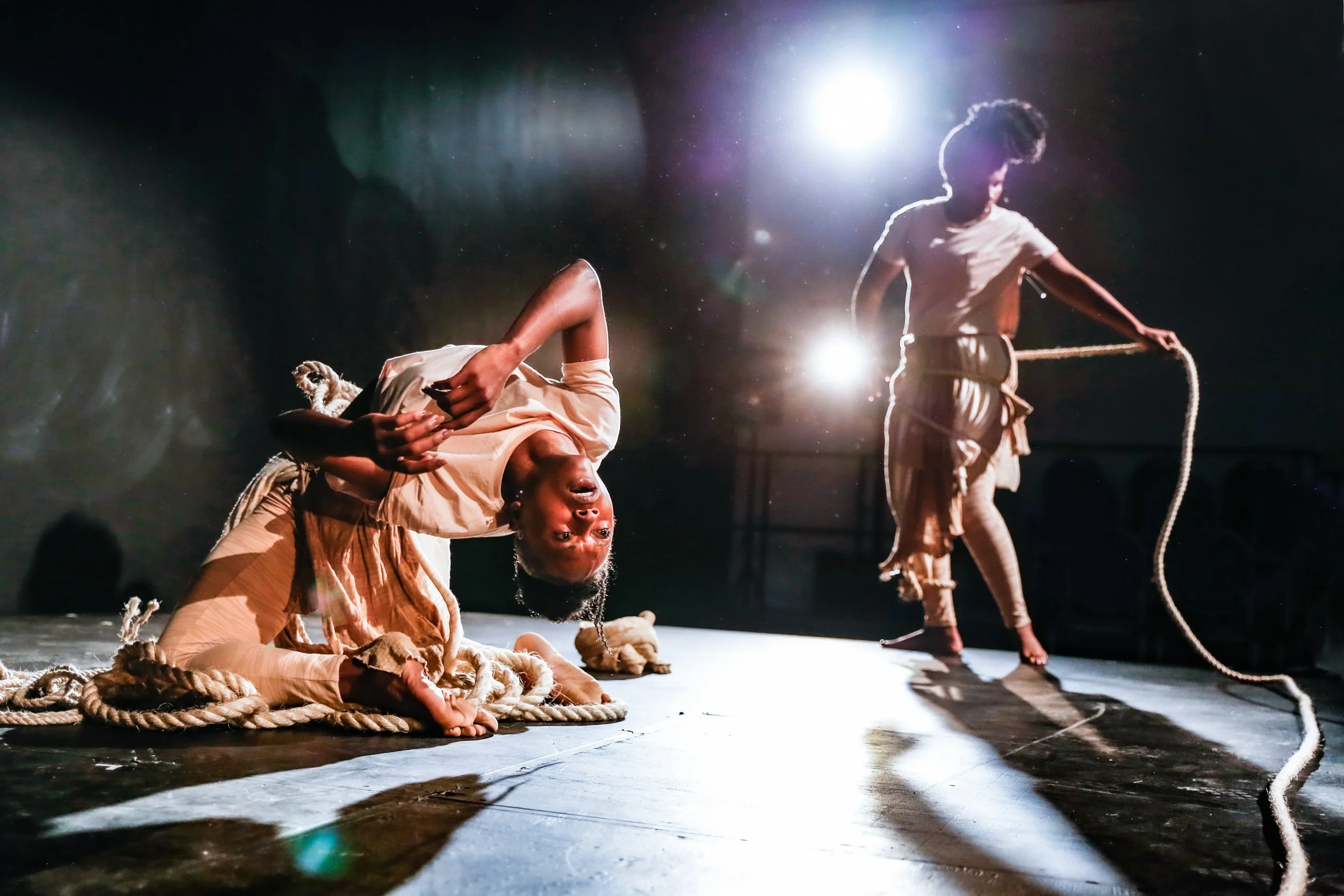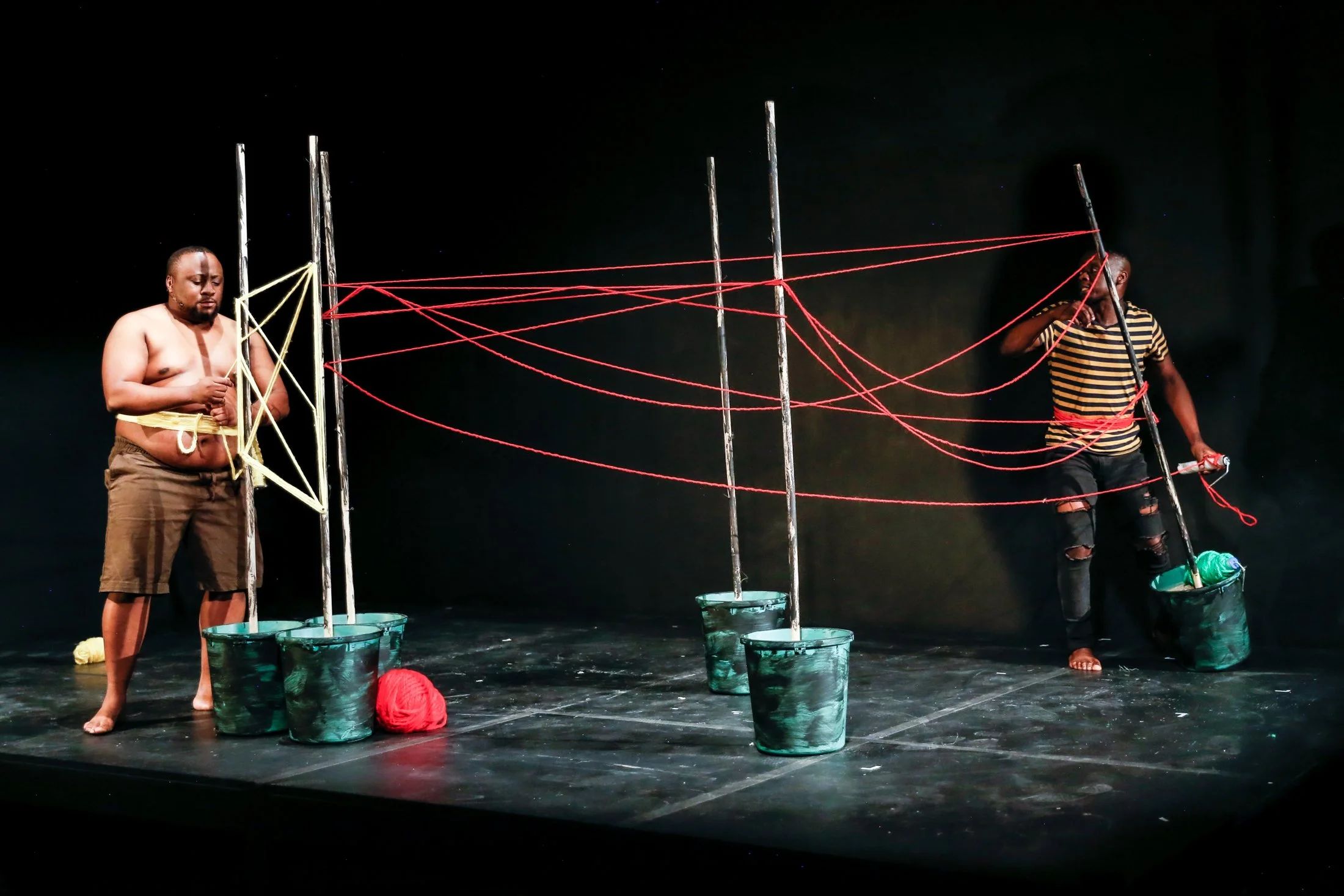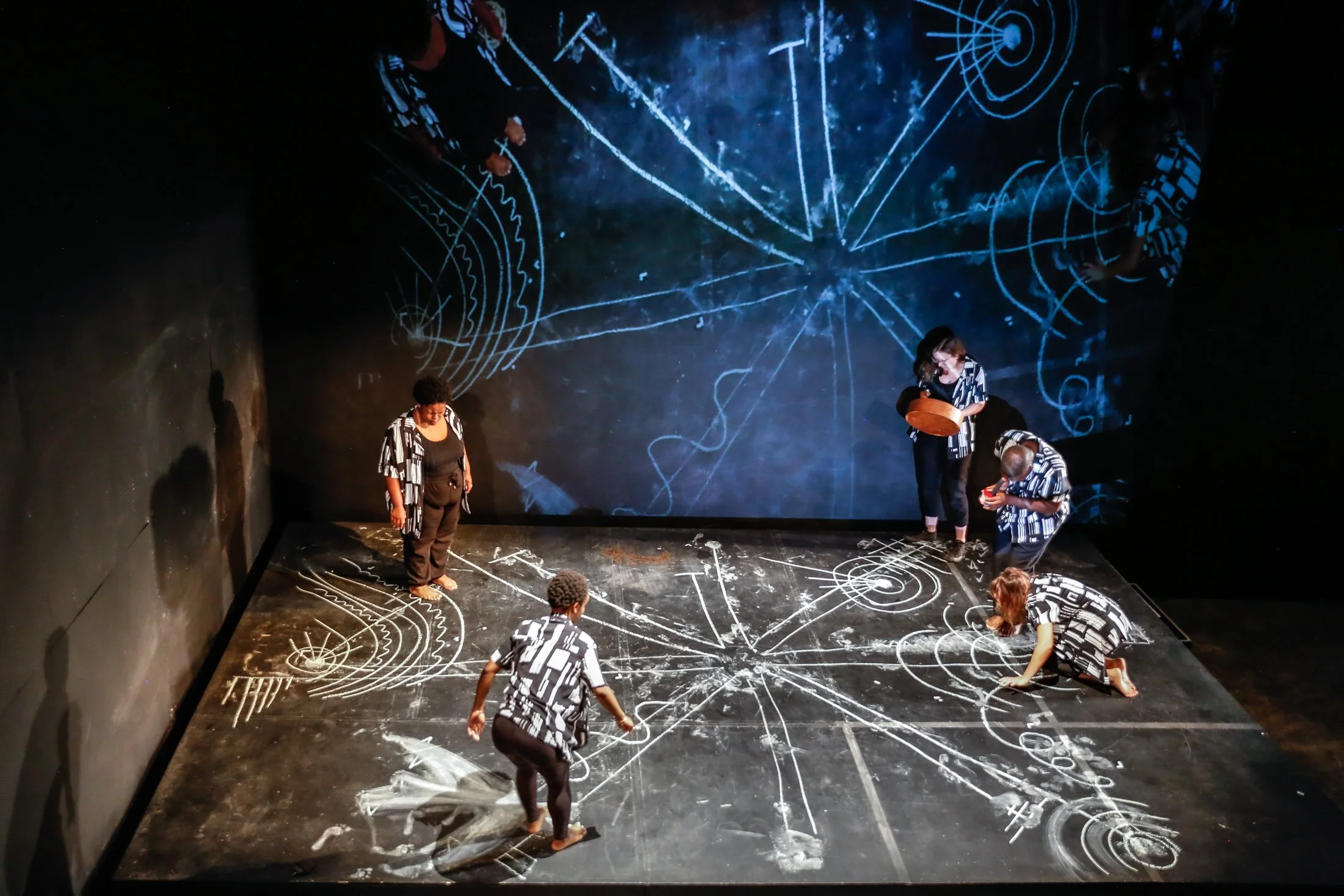In SCORES & SCAPES | METLHALA YA DILO LE DIBAKA, landscapes, dreamscapes, soundscapes, scores and codes are either the translated material or the material for translation in this programme. Sometimes they are both.
MEDI YA KGUJWANA
Ropes become roots, cords and vital points of connection, while the act of binding becomes a way of holding oneself together in Medi ya Kgujwana.
“Please guide me, lead me through, lead the way, enlighten me,” reads the text behind the two performers (Zimbini Makwetu and Zaza Cala) occupying separate ends of the stage. Rope snakes its way through the space between them, simultaneously grounding them and binding them, restraining their movement, nurturing their gestures.
They move slowly, painfully. Bondage becomes a permanent state – both a lifeline and an unbearable condition. Voice and breath grow constrained and constricted and the simultaneous act of breathing and suffocating permeates the stage. Still, woven throughout it all is the enduring presence of song, a resounding and resilient musicality that adds a further narrative layer.
Ultimately, the intimate two-hander is as much about personal history and roots as it is about contemporary connections and foundations.
— David Mann
CREDITS:
CONCEPTUALISERS & PERFORMERS | Zimbini Makwetu & Zaza Cala
WHY DO YOU SPEAK LIKE THIS?
How we talk, where we come from, and how this influences the way we move through the world are some of the points of entry into Why Do You Speak Like This?, a performance that surfaces the complexities of language, location, identity and belonging.
Armed with spindles of thread, two friends (Tony Miyambo & Xolisile Bongwana) take to the stage – “centre stage, at The Centre, in the centre of Johannesburg” – and consider their points of origin. Following a few jabs at the theme of The Centre’s 9th Season and the respective methodologies of its curators – “No Mandla-isms, no life elements. We are using Athena’s aesthetics, clean staging and gesture” – questions around difference emerge and proliferate.
Thread unravels and weaves its way across the stage, creating a haphazard, but complex cartography of language and identity. As the two navigate this network of threads – Thembisa to eBhayi, childhood to adulthood – a series of essential questions emerge: How can a place you’ve never visited be your home? If the buried umbilical cord cannot be traced, where do you return to? In the context of such complicated, fragmented and mistranslated threads of language and identity, where and how does one belong?
Miyambo and Bongwana do not attempt to answer these questions. Rather, through a performance that is equal parts playful and profound, they put them forward to be troubled, twisted and tangled, left to unfurl long after the lights have gone out.
– David Mann
CREDITS:
CONCEPTUALISERS & PERFORMERS | Tony Bonani Miyambo & Xolisile Bongwana
DIRECTOR | Phala Ookeditse Phala
TACTIC
Two figures in matching outfits begin to draw on the black floor of the stage with white chalk. In its relative inactivity, the drawing resembles a flag, or a map. Once activated by a group of performers, it becomes a haptic and sonic device – a cartographic score.
Tactic, conceptualised by Cara Stacey and performed by her and a cast of musicians, dancers and visual artists, makes use of methods of layering, mark-making, gesture, erasure and temporality to produce intersecting sounds, movements and drawings. Performers dance, speak, sing and draw, prompted always by the sounds of the nyunga-nyunga, the chalky pathways of the stage, and the intersecting modes of performance and interpretation they present to one another.
While Tactic is a performance that looks at the various ways in which a musical score can be translated, it is also about the ways in which translation can fundamentally change or transmute the materials it encounters by way of reinterpretation, erasure, or mistranslation. Through constant layering, the stage becomes a palimpsest, an evolving record of sound and movement.
As the stage lights fade, the refrain of black and white – initially reminiscent of sheet music or the pages of a book – is transformed through the use of UV light, alive with colour in this final act of translation.
– David Mann
CREDITS:
PERFORMERS | Bongile Gorata Lecoge-Zulu, Cara Stacey, Nava Derakhshani, Thulisile Binda & Thabo Rapoo
CONCEPTUALISER | Cara Stacey


